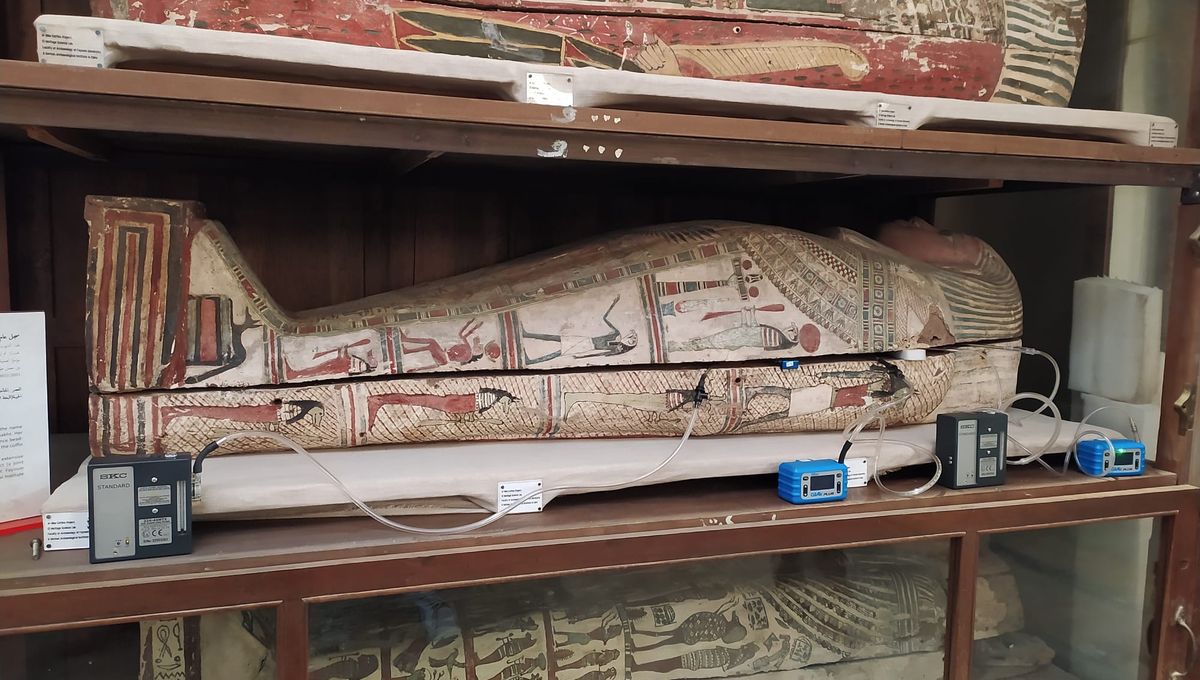
After thousands of years in the afterlife you might expect to stink like a moldy old scrotum, but as it turns out, ancient Egyptian mummies are still surprisingly easy on the nose. A credit to their embalmers, the shriveled bodies retain many of the pleasant odors emanating from the aromatic oils and waxes with which they were originally treated, and have been described as “hedonically pleasant” by a team of trained sniffers.
ADVERTISEMENT GO AD FREE
“The smell of mummified bodies has for years attracted significant interest from experts and the general public, but no combined chemical and perceptual scientific study has been conducted until now,” explained Professor Matija Strlič – lead author of the research – in a statement. Along with a team of olfactory experts, Strlič has now analyzed the stench of nine mummies housed at the Egyptian Museum in Cairo, the oldest of which dates back to the New Kingdom era, which began in 1539 BCE.
“This ground-breaking research really helps us better plan conservation and understand the ancient embalming materials,” he says.
Based on the reports of the sniffers, 78 percent of samples retained a “woody” aroma, while 67 percent were described as “spicy” and 56 percent smelled “sweet”. Only a third of the mummies were found to emit negative odors such as “stale” or “rancid”, with the same proportion giving off “incense-like” vibes.
“The average intensity of the set was “medium”[…] and the hedonic tone was assessed as “slightly pleasant” on average,” write the study authors.
In addition to their human instruments, the researchers also made use of an electronic “nose” to get a better idea of exactly what kinds of volatile compounds were being spewed from the ancient mummies. This revealed the presence of terpenoids like pinene, limonene and verbenone, all of which likely originate in the oils, resins and waxes used in the mummification process.
Such compounds “indicate the use of cedar or pine resin, gum resins like myrrh and frankincense, and other plants such as thyme, lavender, and eucalyptus”, explain the researchers. The presence of borneol in the aromas, meanwhile, may derive from the use of camphor.
ADVERTISEMENT GO AD FREE
Using gas chromatography and mass spectrometry, the study authors were able to separate the aromatic compounds into those produced by the mummification materials as well as those arising from plant oil and pesticides added during modern conservation efforts and those given off by molds and other microbes. Overall, they found that mummies on display tended to have stronger and more complex odors than those in storage, “likely due to the accumulation of volatiles in the display cases.”
Based on these findings, the researchers suggest that the “olfactory heritage” of ancient Egyptian mummies should be considered a vital component of their cultural, historical, and archaeological value, and urge museums to do everything they can to preserve these ancient smells.
The study has been published in the Journal of the American Chemical Society.
Source Link: What Do Ancient Mummies Smell Like? Pretty Good By The Sounds Of It